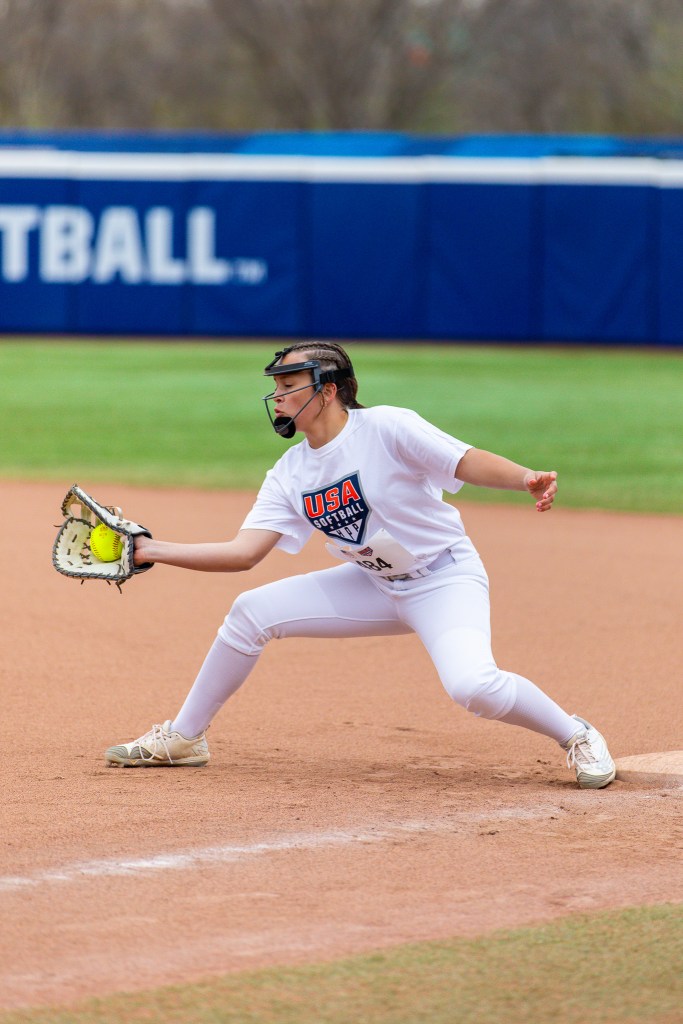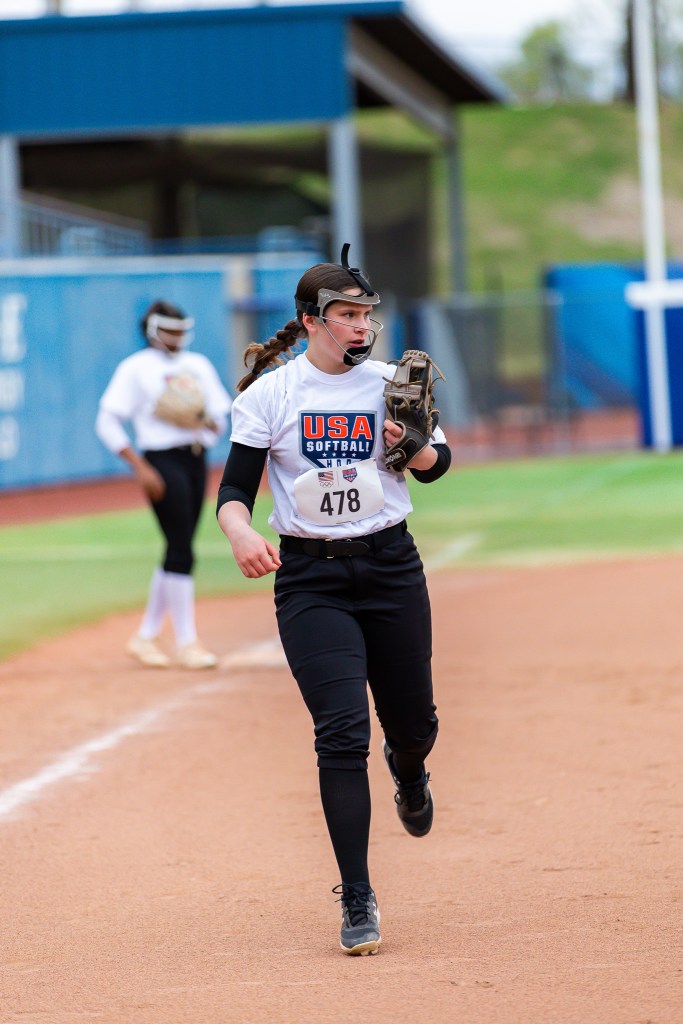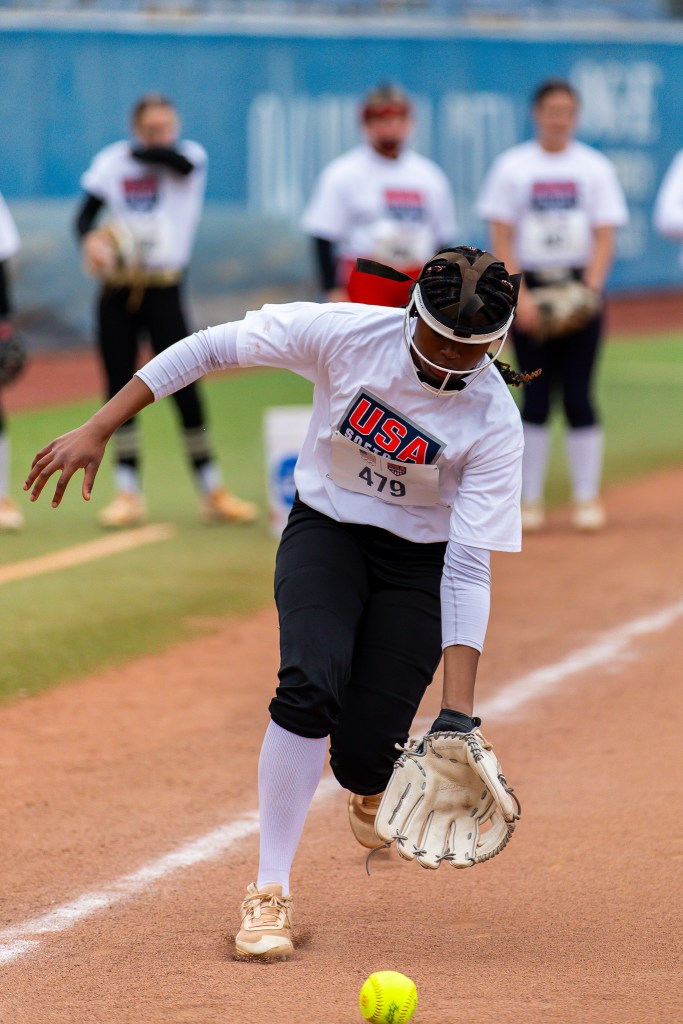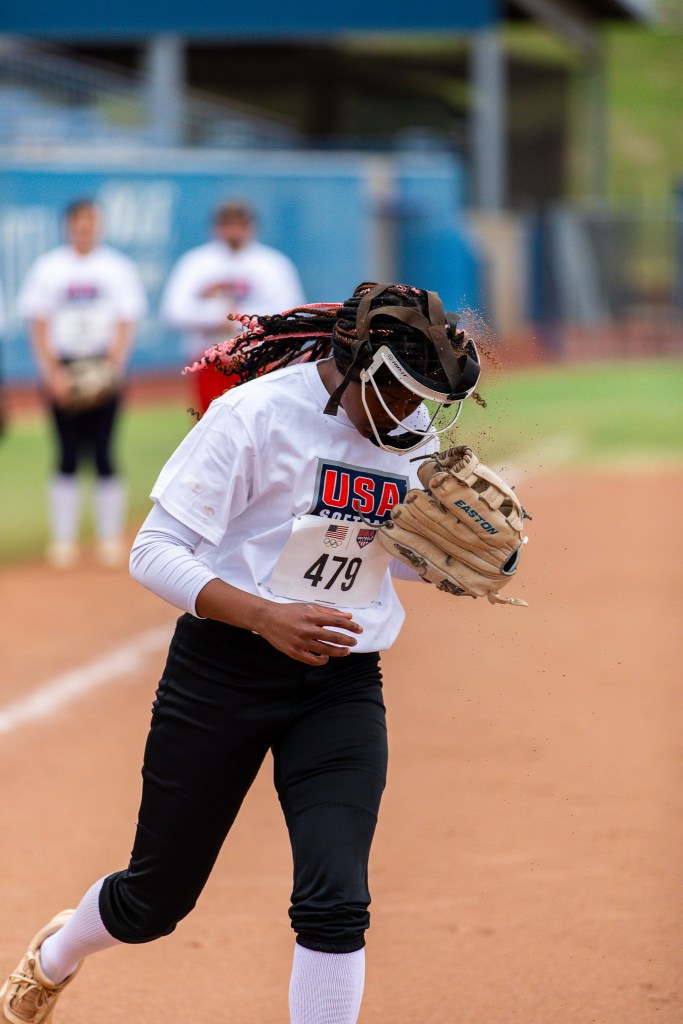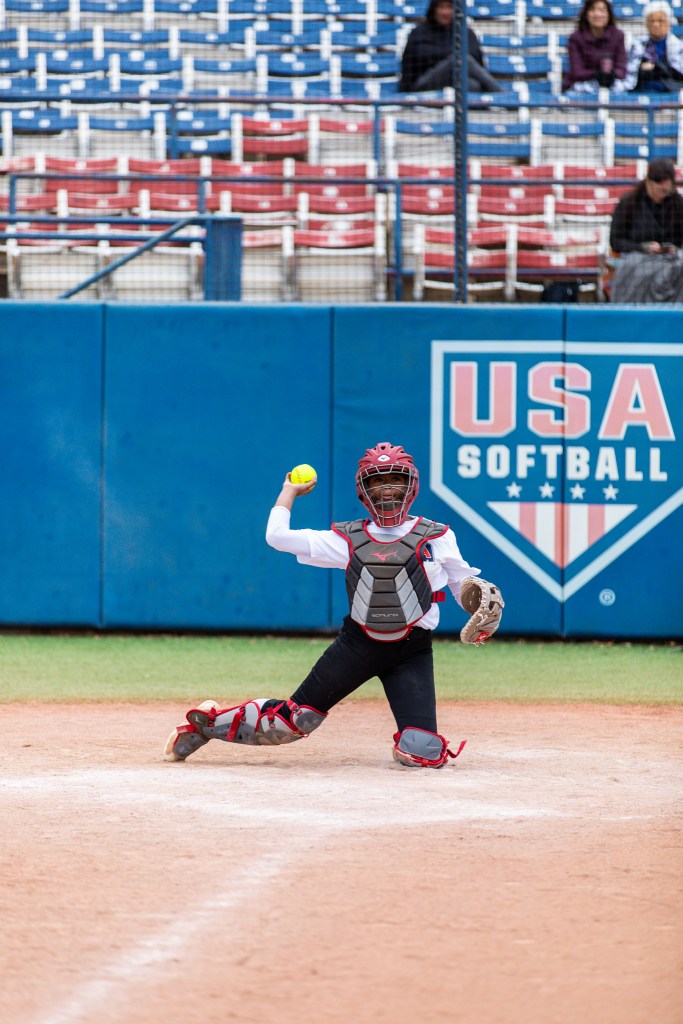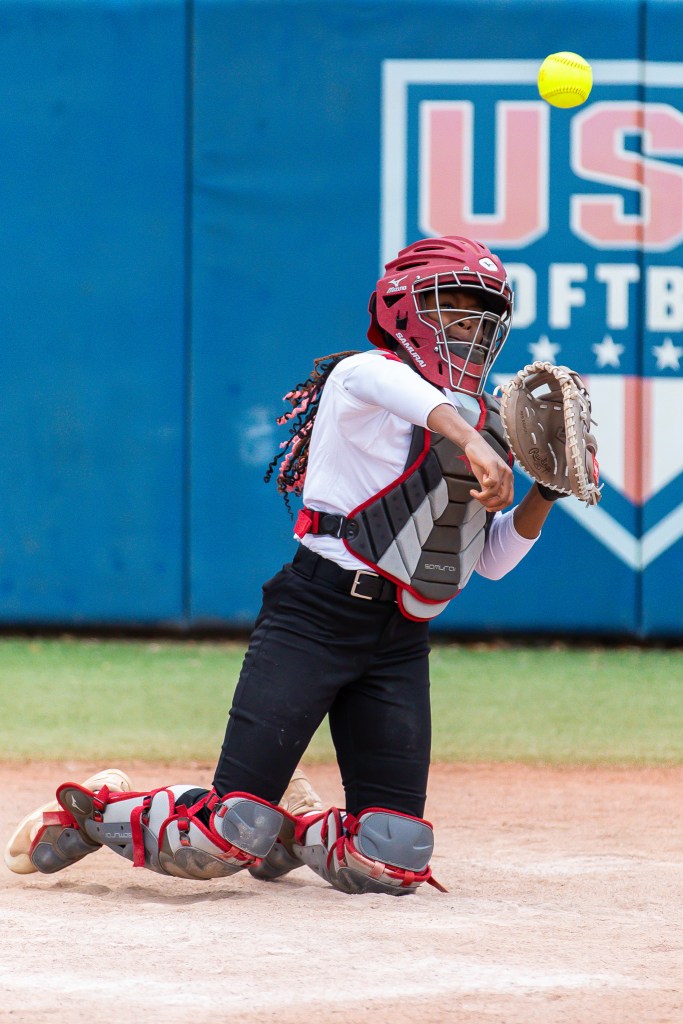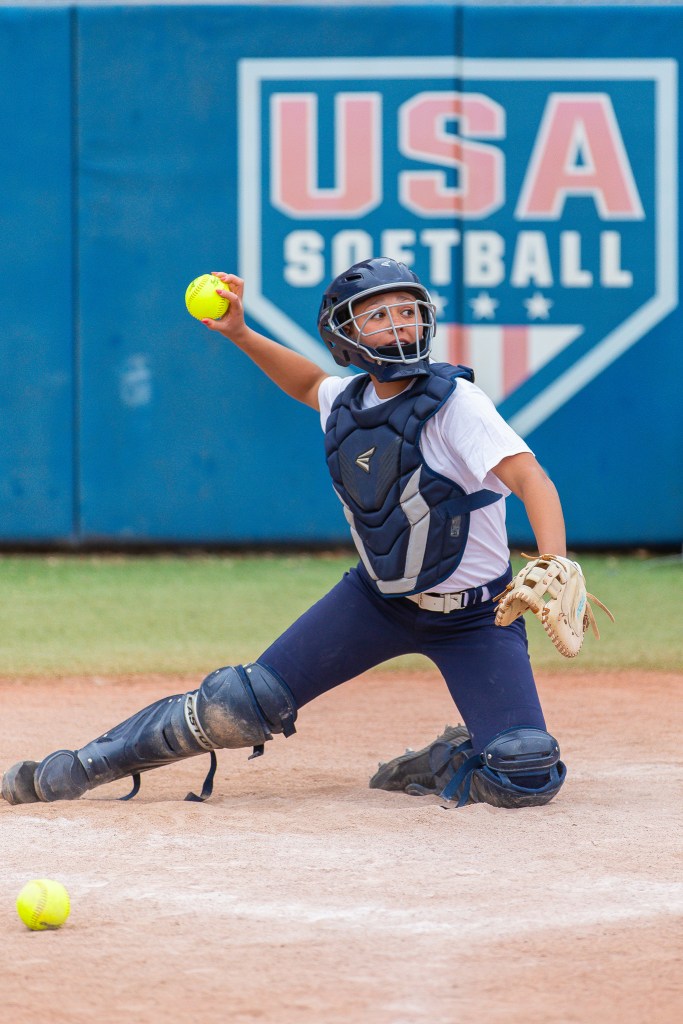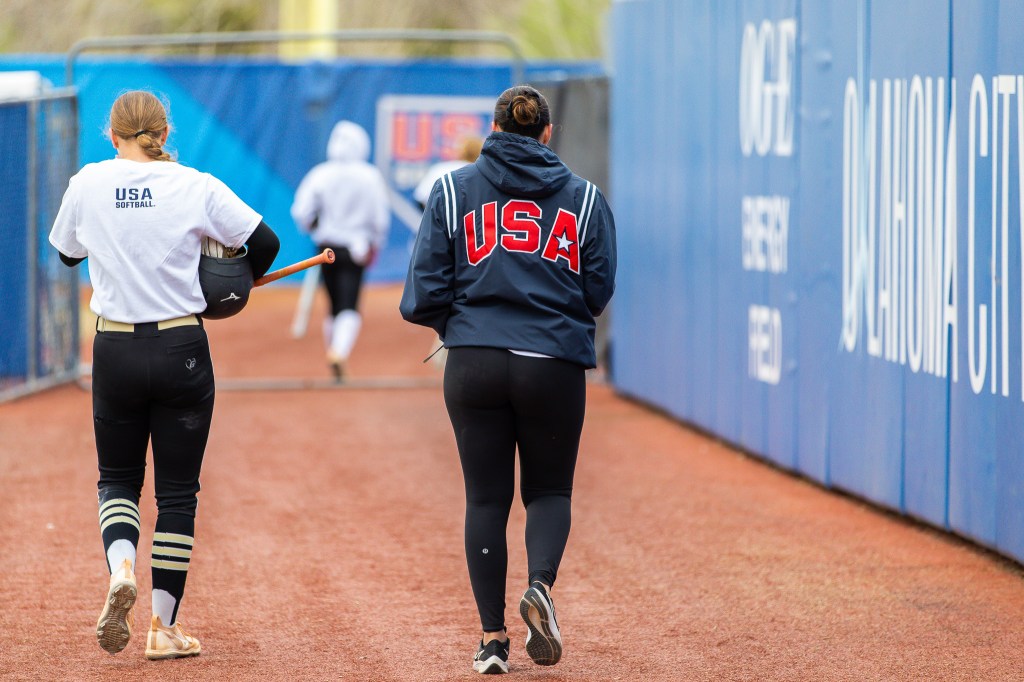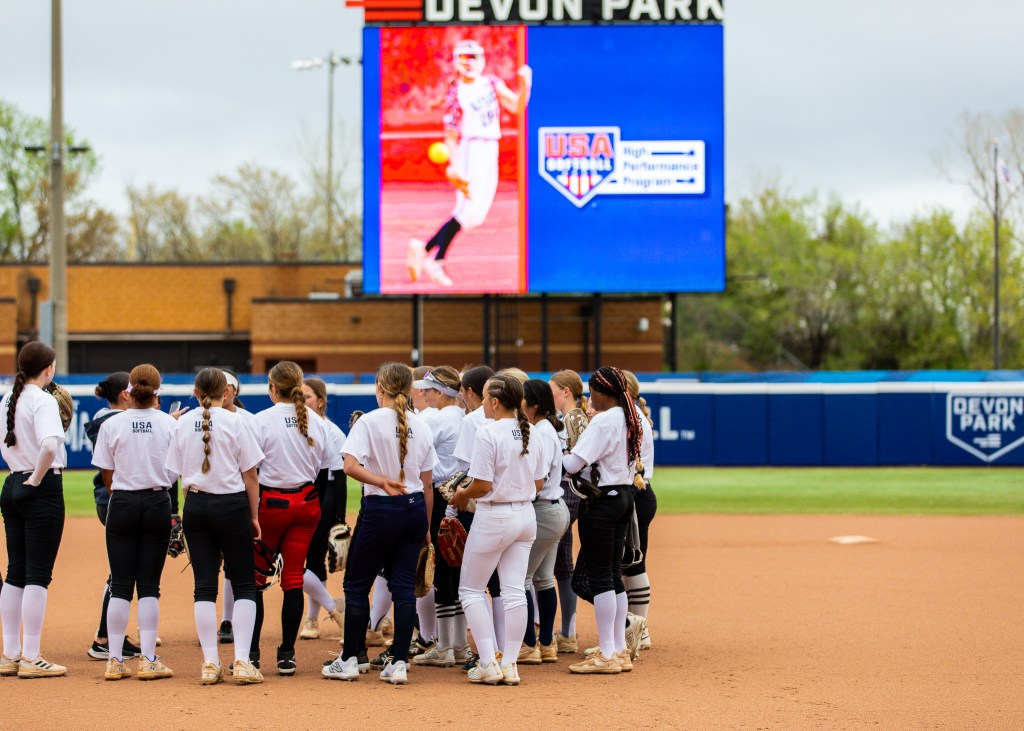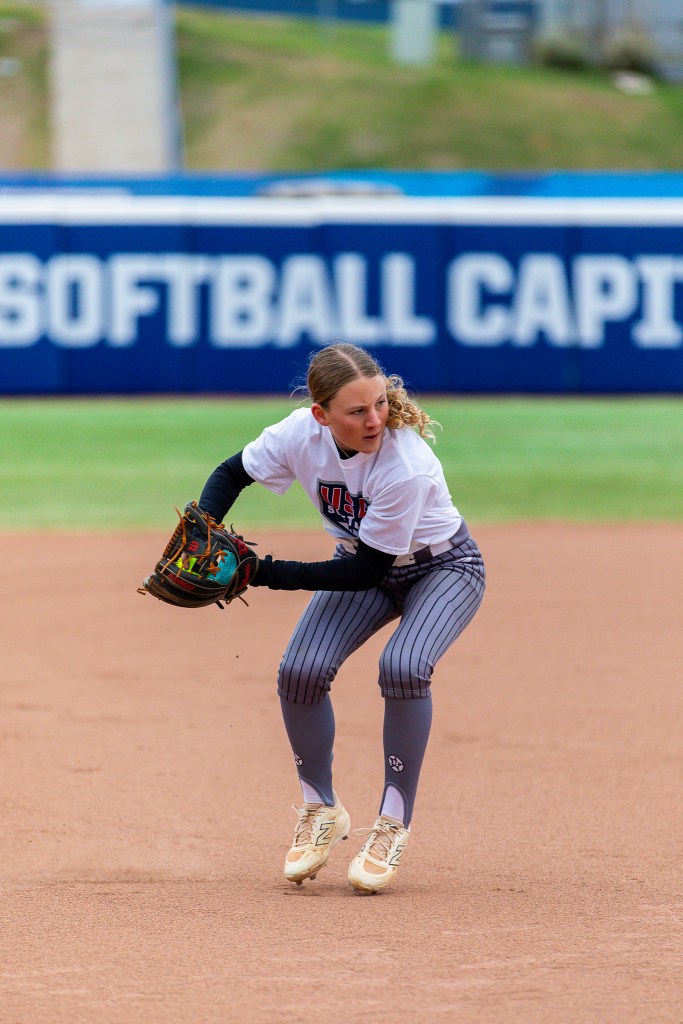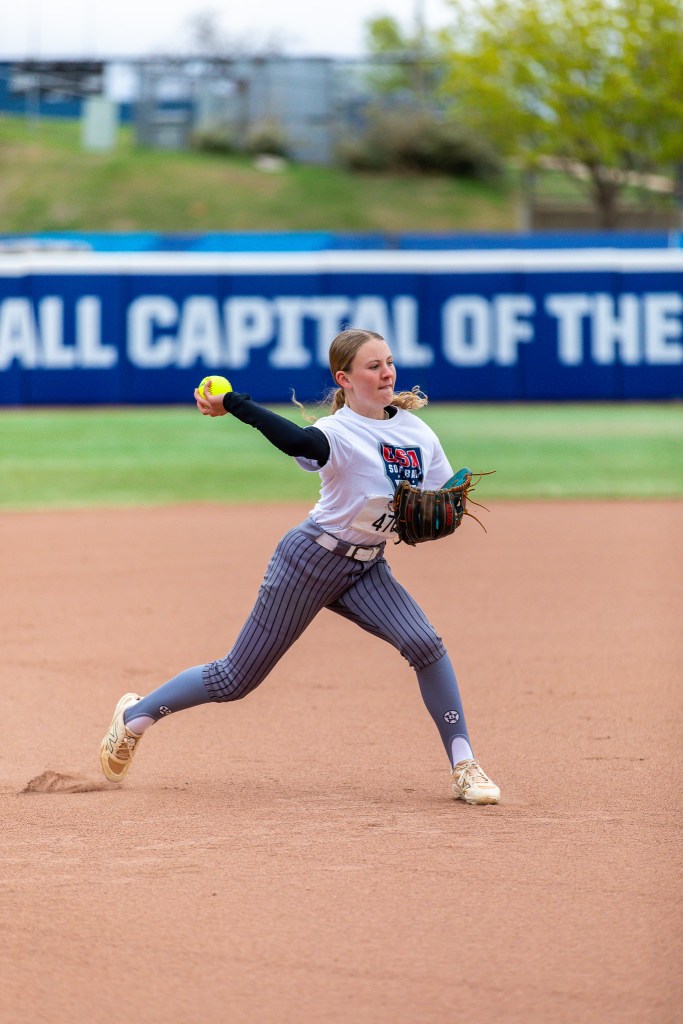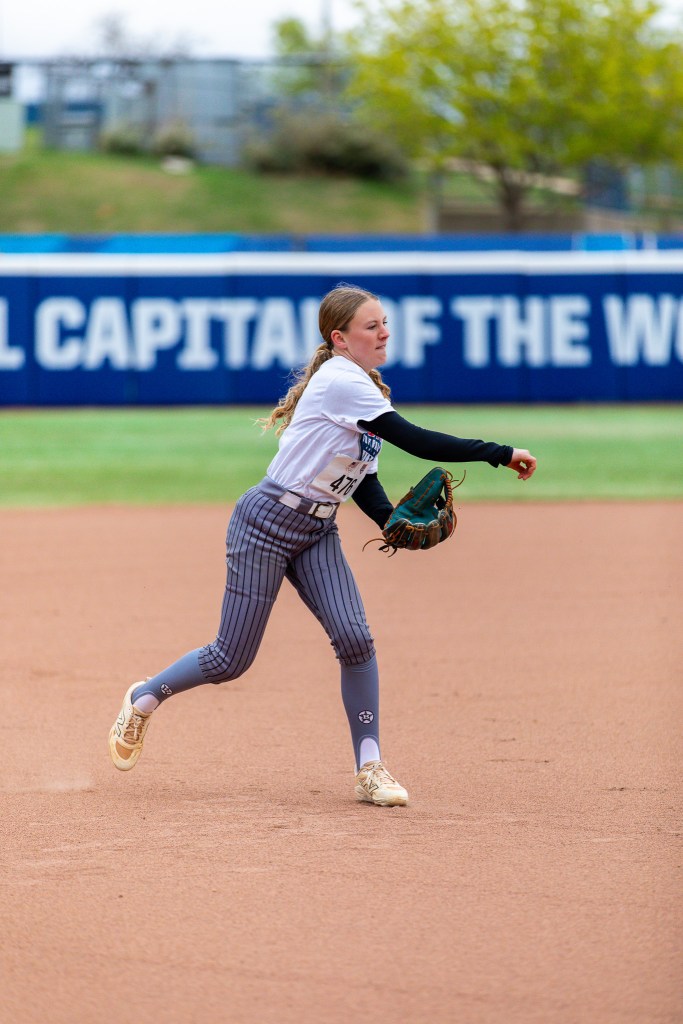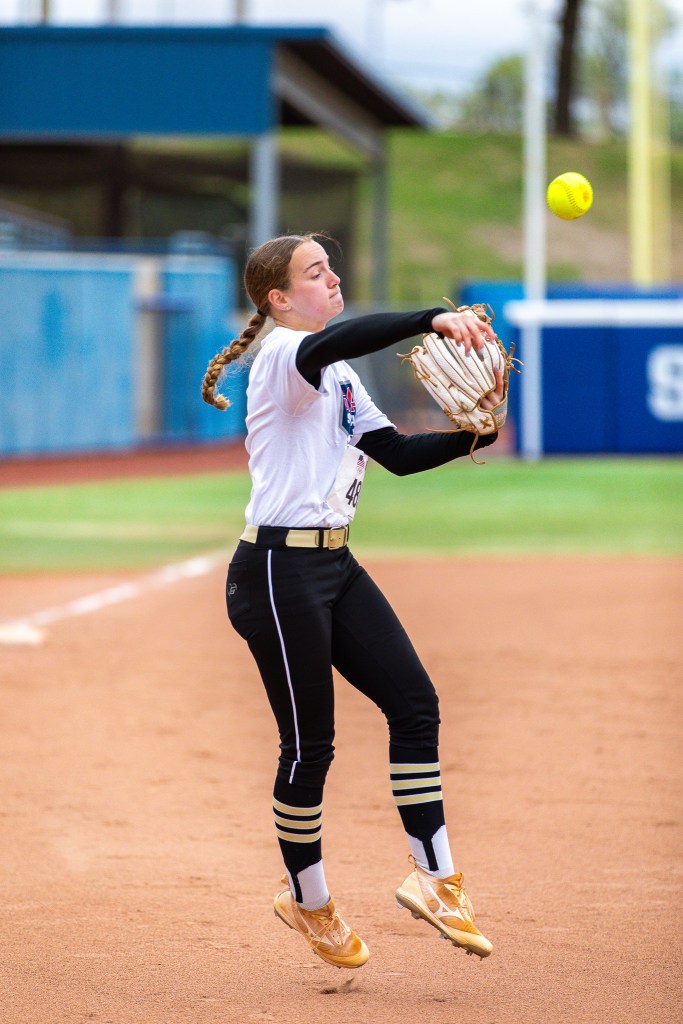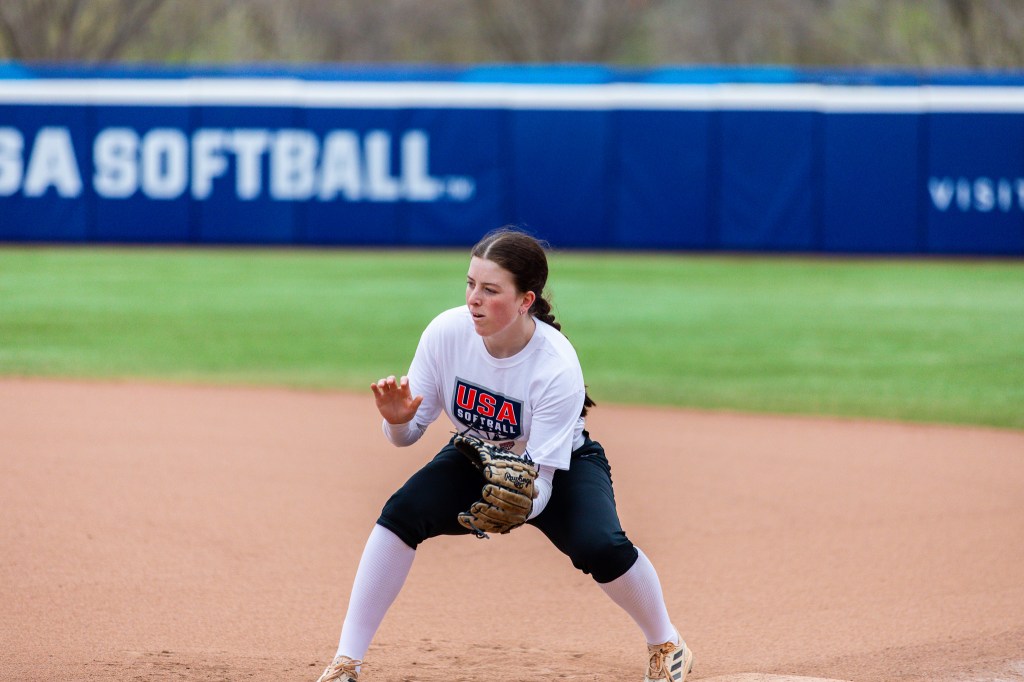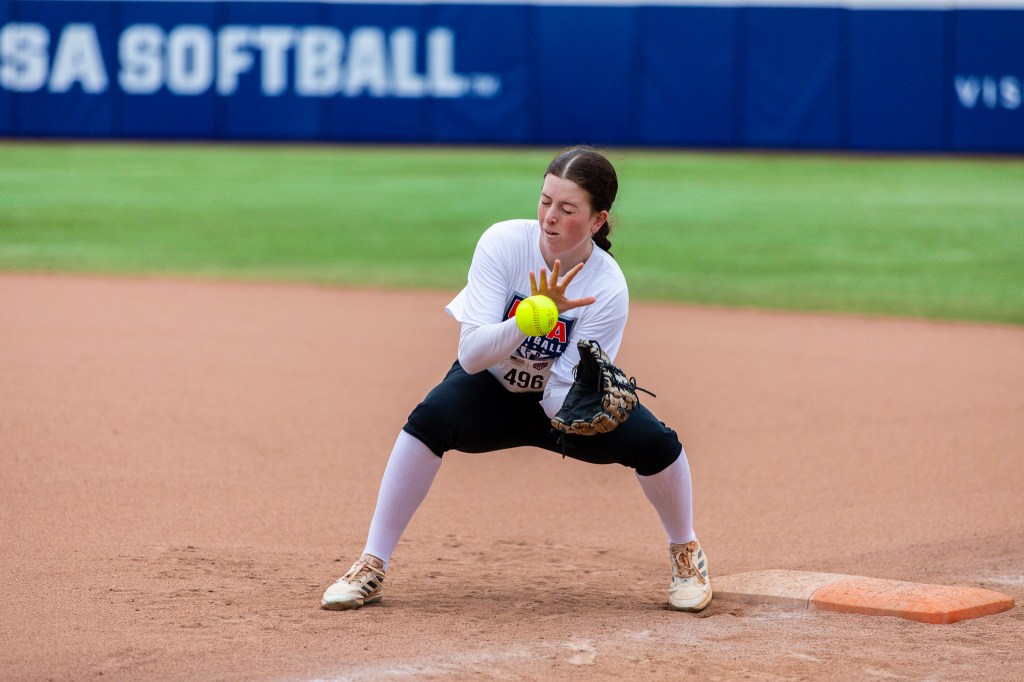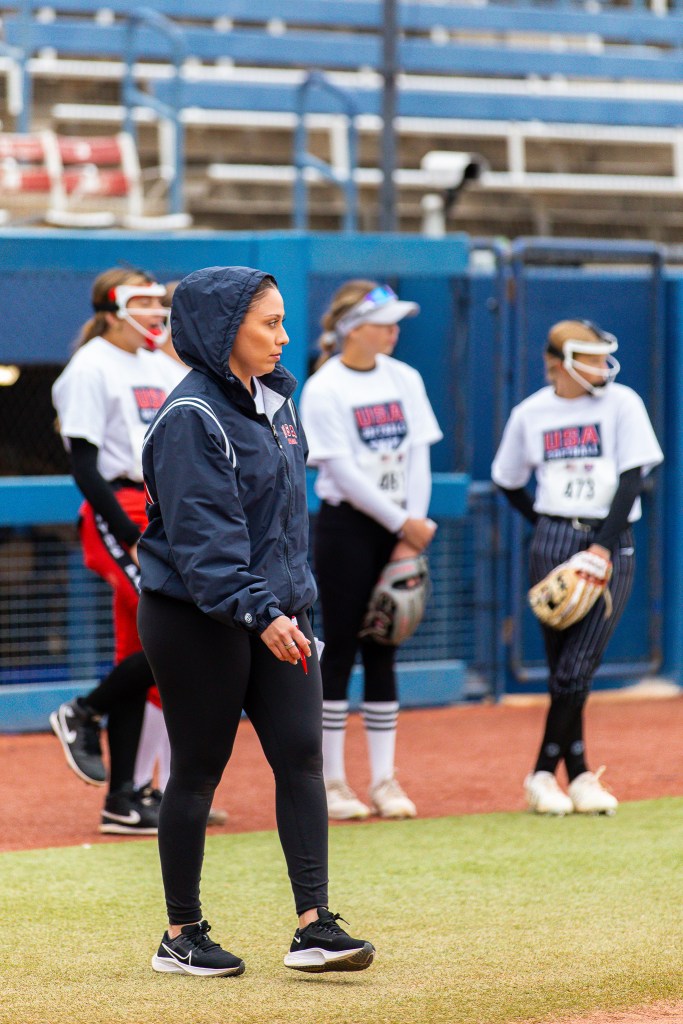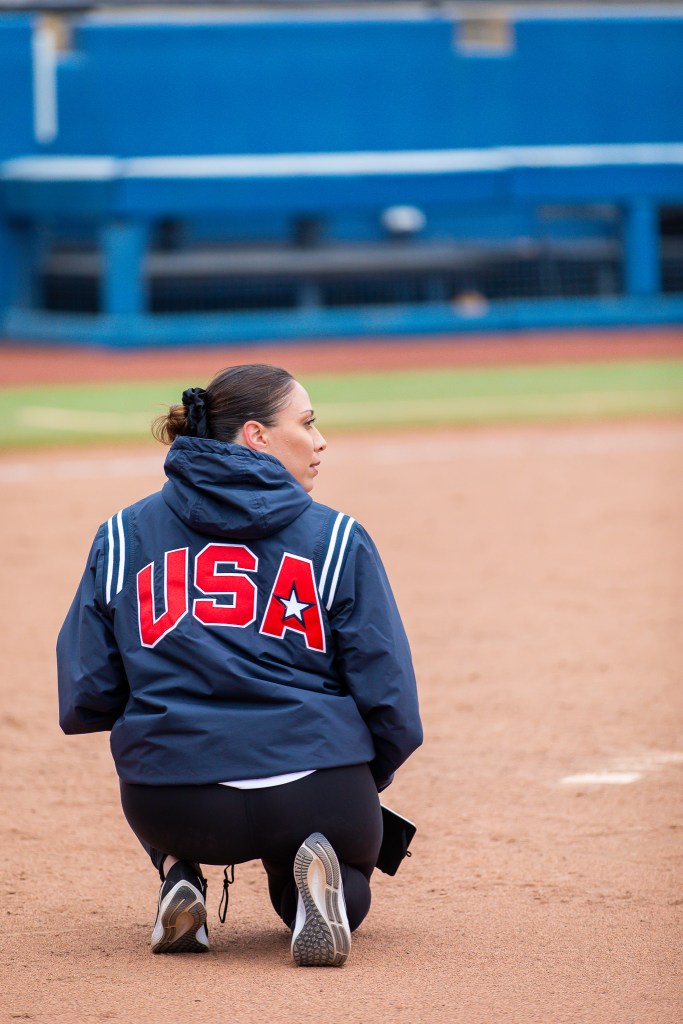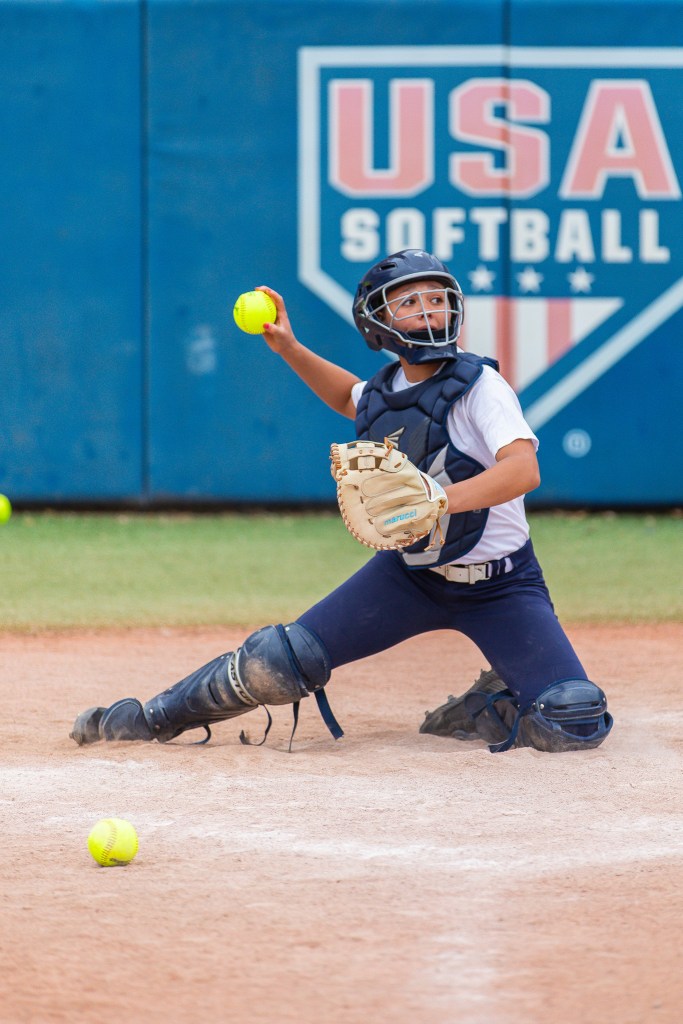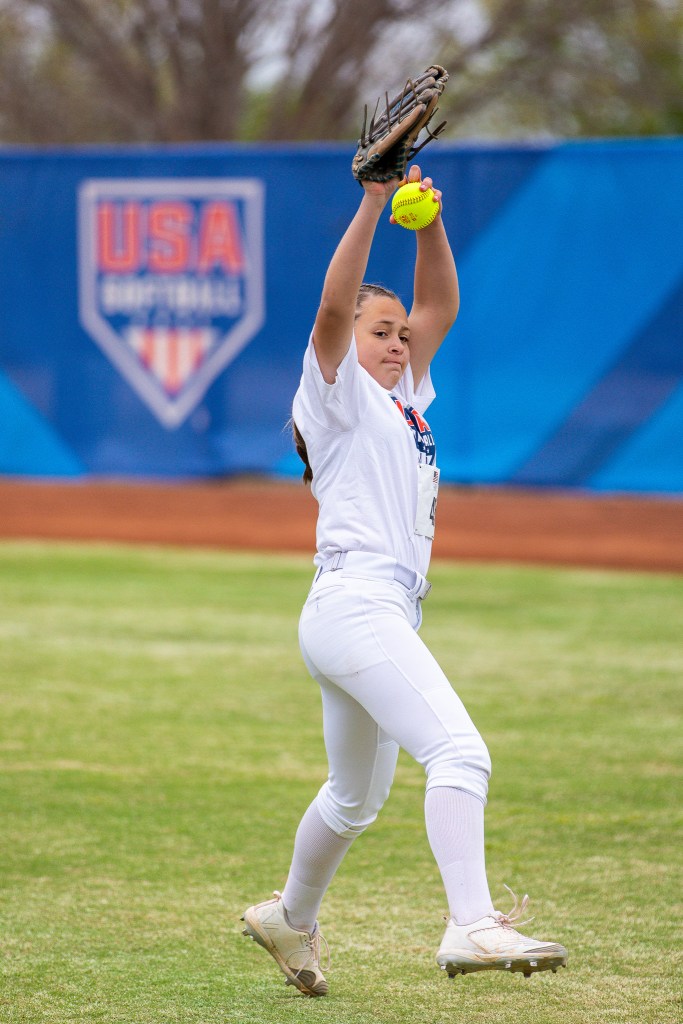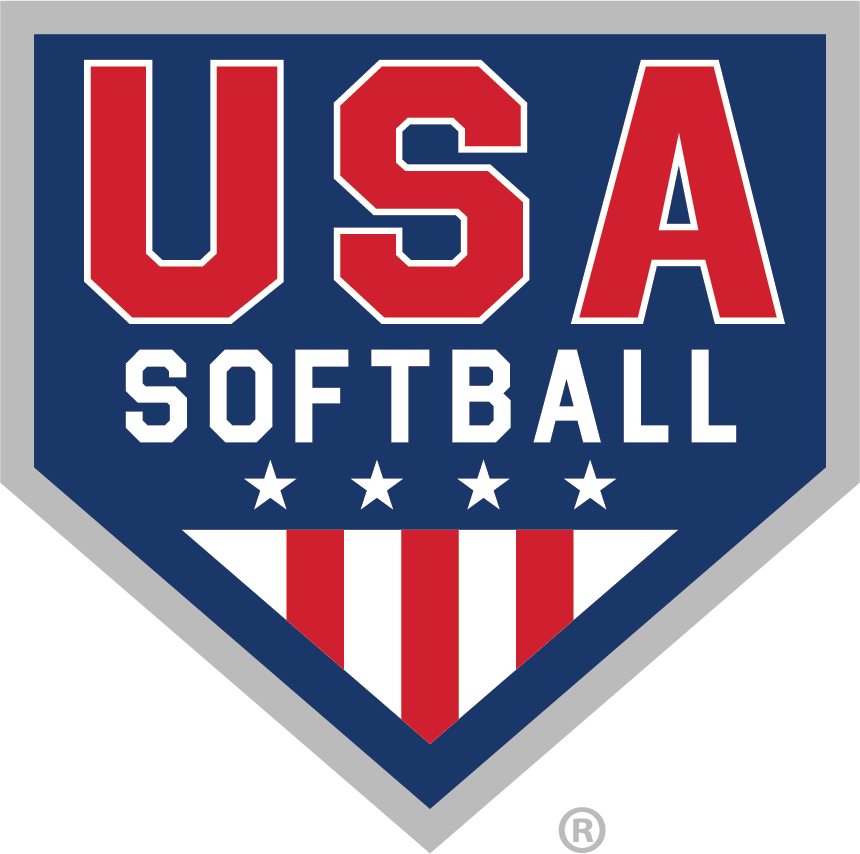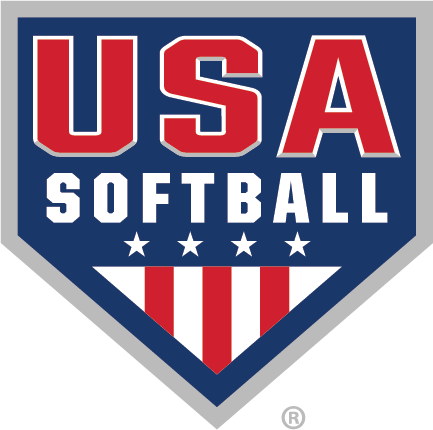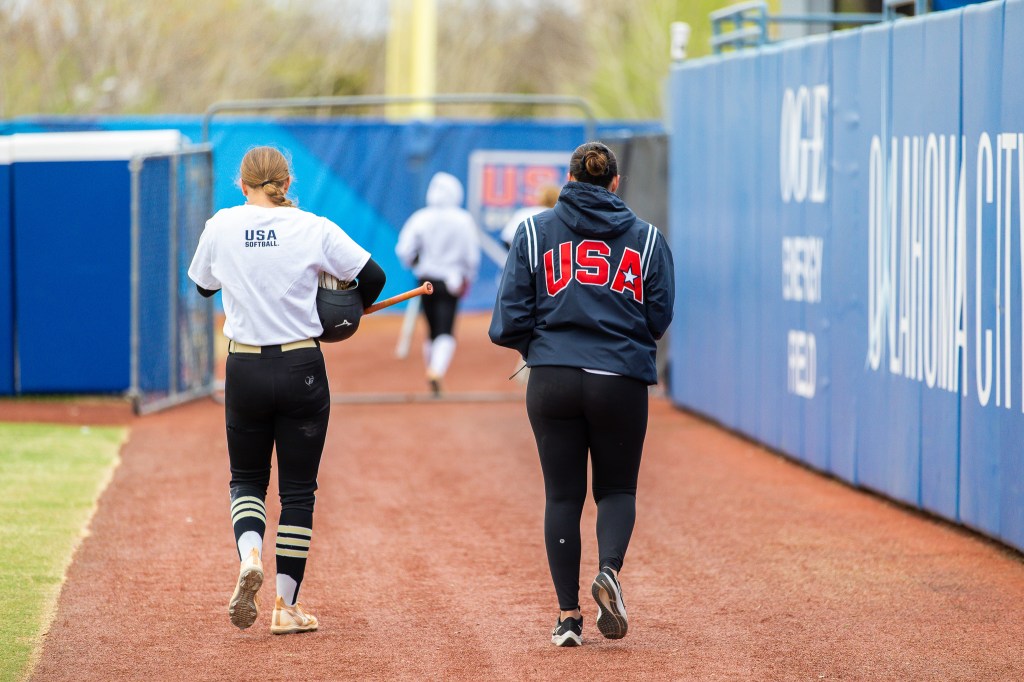
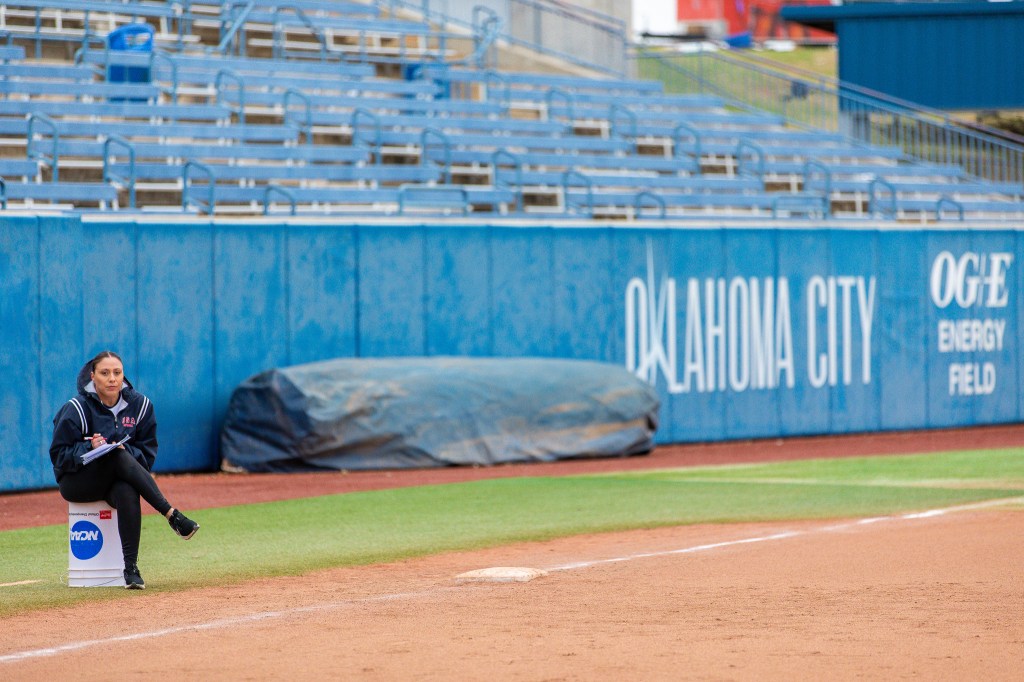
OKLAHOMA CITY – Known as the pipeline to the Women’s National Team, USA Softball’s High Performance Program (HPP) looks to identify athletes from across the country each year that can train, compete and represent USA Softball at the highest levels.
Each of the 10 regions that USA Softball offers hosts an HPP Identifier from March through September, run by local coaches with the athletes being evaluated by National Team athletes, alumni and other professional softball players. The top athletes will then be invited to the National Selection Event, with USA Softball recognizing the top athletes for the age-specific Top Performers in the current year who will possibly earn an invitation to a National Team trial with pool or team participation being extended based on the calendar of WBSC events.
USASoftball.com caught up with former OU National Champion, Team USA member and current GM for the OKC Spark, Destinee Martinez, at the Region 5 Identifier to chat about what it takes to be an HPP athlete.
Click here for more information on the USA Softball High Performance Program »
Q: What key skills or attributes do you look for when evaluating athletes at each position during the HPP Identifiers?
A: Watching them interact with their new teammates or friends out on the field is a piece of it, but also their mechanics are obviously a big part of it. Their throws, their form, their footwork, and their body language – all of those are key attributes. For example, are they looking at you in the eyes. Those types of things matter as well and that’s not really taught a lot. So, I feel like these types of events are when you can see those who stick out better than others based on what type of athlete we want representing our country.
Q: What separates a good player from an elite athlete in the High-Performance Program?
A: Something that separates them is being the leader type. These events are tricky because they don’t know each other a lot of the time. They don’t know the coaches, they don’t know who they’re talking to, they don’t know who is involved at all. I feel like those athletes who kind of stand up and help take the lead, stick out. The ones who are quiet, but very good offensively or defensively, they show up and show out and they do stand out. But again, the ones who are leading the charge, helping the coaches be organized out on the field, being loud, and supporting these strangers that they don’t even know also stand out. It’s kind of hard to stand out when you’re not in a game setting, but those athletes that do find a way are the ones that I feel tend to stand out the most.
Q: How important is versatility when selecting athletes for the National Selection Event?
A: Versatility is super important. I don’t think a lot of people understand how the roster size limits you. Typically, these rosters are 15 players. That gives you your starting nine. Then, you want maybe two extra pitchers, which puts you at 11, and maybe another catcher, that’s 12. That gives you three extra spaces. Obviously, the makeup of the roster depends on who’s coaching, but maybe you don’t want to give one of those spaces to a designated hitter who can’t play defense because of the possibility of injuries. You’ve got to be very versatile.
If you can play multiple positions, that helps during selection because it helps to combat injuries on the team or if someone needs a break. Then you have somebody else that can jump in and play whenever they’re called upon. So, I think being able to say yes and being willing to play another position is extremely important, especially in the selection process, because if you’re only capable of one thing, it’s tough to be one of those three extra bodies that is needed to fill that 15th spot. If you can only hit, or if you can only play one position, it’s really difficult to be selected.
Q: What advice would you give to athletes who are preparing for an HPP Identifier and hoping to stand out?
A: If you’re preparing for an HPP event, look online and see what you’re getting yourself into. The skills and everything you are going to go through are posted online. I would recommend you look at that and understand that if you’re an outfielder, you get to choose your primary and secondary positions. If you’re an outfielder, you’ll get six balls and if you’re an infielder, you’ll get six balls, and it’ll tell you where you will be throwing and things like that. Then put yourself through the planning of what the HPP event is. You’re going to run a 5-10-5, you’re going to run a 40-yard dash, so just preparing your body and understanding the skills that are going to be tested at the event is important.
I think as long as you come with an idea of what you’re doing, you will be somewhat prepared, but if you can practice those things, maybe four to six weeks before, you’re going to come in with confidence, and an understanding of what the event will look like.
Q: How does HPP help develop athletes beyond just their physical skills?
A: It is just their character. If you come out and you’re a superstar, but we’re looking at 40 different superstars, so you are going to stand out more if you’re a good teammate. You will stand out because you’re respectful and because you’re putting effort into all aspects of the game and cheering your teammates on. I think when you’re dealing with a ton of good athletes, the ones who stand out as elite are the ones who have those character traits because everybody is good. We see a lot of good players at these events, so I think to stand out and be elite, you’ve also got to show those character traits of being a leader on the field, being vocal, and being supportive of your teammates.
Q: What role does mental toughness play in the evaluation process, and how can athletes showcase that during tryouts?
A: These events are difficult, so I think the mental aspect is a big piece of it because you’re going to get your evaluations back, you are going to see your scores, and you may or may not be happy, but I think the reality of it is to be able to take those scores and understand that there are different parts of your game that you can excel in. Also, understanding that the evaluators have played at an elite level. I have played at the highest level. That’s why they want former USA athletes and members to be part of the evaluation process because those athletes know what it takes to play at that level. So, understanding that when you see your scores and you’re going through these identifiers, you really need to take it all in and understand that those are aspects of the game that you can improve on.
I think that in all aspects, Team USA wants you to be the most elite athlete that you can be. So, understanding that the scores and what they look like or how they reflect on you, is not to hurt anyone’s confidence. It’s to help you develop in the different aspects of your game.
Q: Can you share some common mistakes you see athletes make during evaluations and how they can avoid them?
A: I see some athletes put so much pressure on themselves to make perfect throws every single time or if they didn’t field the ball, their body language changes. I would just recommend that in these moments, you’ve got to trust yourself and your abilities because once you’re in this moment, there’s nothing that you can really work on anymore. There is nothing that you can immediately change.
I think just showing up and understanding that you are talented enough to be here, and to trust your skills, and just make it a little bit more fun. If you miss the ball, go get after it. Don’t change your body language or get upset. I think it’s the way you respond in that moment. Then, if it’s something that you realize you need to go home and practice on, that’s different. When you’re at an HPP event, I’d love to see these athletes having fun,
trusting their skills, trusting their mechanics, and if they miss one rep or have a bad throw, then they’re coming back and they’re doing the next thing better. Because that’s all you can really hope for at that moment. You only get so many pitches, you only get so many balls in the outfield or infield, so all you can really do is to flip that switch right then. So, just make sure that you’re coming out, you’re having fun, and you’re trusting your skills.
Q: Having played a key role in jumpstarting the HPP program, how do you think it has influenced athlete development and prepared players for higher levels of competition?
A: I was working with USA softball at the time, and it was something that really needed to be established because it was very difficult to find talent nationwide in a fair way. I feel like there’s always been top-quality travel teams and there’s always good athletes on those teams, but there was never a pipeline that was created for these girls to have an opportunity, a fair opportunity, to play for our women’s national teams.
The creation of this is to establish a clear pipeline and no matter what team you represent, no matter what part of the country you’re in, you have an opportunity to come to an identifier and be identified and to represent your country, your state and your region, no matter whether you’re a part of USA softball or if you are on a certain team. It is an equal opportunity for anybody in our country to come out, to be identified, and to put themselves in the pipeline.
We have found some diamonds that don’t play on the top travel ball teams, who don’t travel, and they only want to be playing in their hometowns, and that’s great. However, through HPP, those girls are able to stand out a little bit more.
Q: How does the High-Performance Program help bridge the gap between youth, collegiate, and international play?
A: The High Performance Program bridges the gap in the sense of seeing the other elite athletes around you. The National Selection Event in Vero Beach had about 400 athletes there. So, you were able to see the talent level at your age. I think it bridges the gap by understanding who’s out there, basing it not on the travel teams but more on your position. The pitchers were able to see all the top pitchers in the country, not just the top pitchers in their state or the top pitchers they see in high school play. I think it opens everyone’s eyes, understanding who and where all the talent is. Then it brings them together and they get to know each other. I think it’s a really cool opportunity. Some of these girls will compete together in the summer once a team is selected, so it gives them an amazing opportunity to travel the world together and play together, especially when they all come from different backgrounds and from different states.
Q: What do you think is the most important aspect of becoming a successful USA Softball athlete?
A: I think one of the most important aspects is representing yourself well. If you’re part of this program and you’re at the National Selection Event, you’re considered one of the best. Then it just comes down to what the roster needs are, but also the way you represent yourself and the way you will represent this country. I think that’s a whole different kind of honor, but it’s also a different type of pressure.
Also, just being responsible and professional enough to maintain your own training. Another difficult part of our sport is that we are not always together. Team USA will come together in the summer, they’ll maybe come together a few weeks before that to practice with one another, to learn each other, to practice plays and things like that, but understanding that you have to keep yourself in shape, and be a professional in this space no matter what age you are. If you’re representing our country, we’d like for you to represent yourself as a professional, take your training seriously, and just take care of yourself. I think if you can do that and represent us well, those are two of the biggest aspects.
FOLLOW US!
For live updates and behind the scenes action at all USA Softball events throughout the year, follow along on social media and at www.USASoftball.com for event information.
